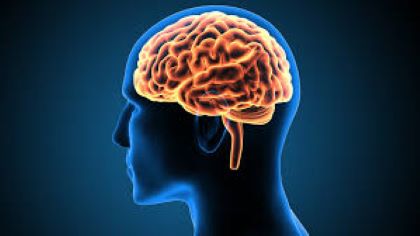Ten years ago, Dr. Jeff Lichtman — a professor of molecular and cellular biology at Harvard University — received a small brain sample in his lab.
Although tiny, the 1 cubic millimeter of tissue was big enough to contain 57,000 cells, 230 millimeters of blood vessels and 150 million synapses.
“It was less than a grain of rice, but we began to cut it and look at it, and it was really beautiful,” he said. “But as we were accumulating the data, I realized that we just had way, way more than we could handle.”
Eventually, Lichtman and his team ended up with 1,400 terabytes of data from the sample — roughly the content of over 1 billion books. Now, after the lab team’s decade of close collaboration with scientists at Google, that data has turned into the most detailed map of a human brain sample ever created.
300 million images
The brain sample came from a patient with severe epilepsy. It’s standard procedure, Lichtman said, to remove a small portion of the brain to stop the seizures, and then look at the tissue to make sure it’s normal. “But it was anonymized, so I knew next to nothing about the patient, other than their age and gender,” he said.
To analyze the sample, Lichtman and his team first cut it into thin sections using a knife with a blade edge made of diamond. The sections were then embedded into a hard resin and sliced again, very thinly.
“About 30 nanometers, or roughly 1,000th of the thickness of a human hair. They were virtually invisible, if it weren’t for the fact that we had stained them with heavy metals, which made them visible when doing electron imaging,” he said.
The team ended up with several thousand slices, which were picked up with a custom-made tape, creating a sort of film strip: “If you take a picture of each of those sections and align those pictures, you get a three-dimensional piece of brain at the microscopic level.”
That’s when the researchers realized they needed help with the data, because the resulting images would take up a significant amount of storage.
Lichtman knew that Google was working on a digital map of a fruit fly’s brain, released in 2019, and had the right computer hardware for the job. He got in touch with Viren Jain, a senior staff research scientist at Google who was working on the fruit fly project.
“There were 300 million separate images (in Harvard’s data),” Jain said. “What makes it so much data is that you’re imaging at a very high resolution, the level of an individual synapse. And just in that small sample of brain tissue there were 150 million synapses.”
To make sense of the images, scientists at Google used AI-based processing and analysis, identifying what type of cells were in each picture and how they were connected.
The result is an interactive 3D model of the brain tissue, and the largest dataset ever made at this resolution of a human brain structure. Google made it available online as “Neuroglancer,” and a study was published in the journal Science at the same time, with Lichtman and Jain among the coauthors.
Understanding the brain
The collaboration between the Harvard and Google teams resulted in colorized images that make the individual components more visible, but they are otherwise a truthful representation of the tissue.
“The colors are completely arbitrary,” Jain explained, “but beyond that, there’s not much artistic license here. The whole point of this is that we’re not making it up — these are the real neurons, the real wires that exist in this brain, and we’re really just making it convenient and accessible for biologists to view and study.”
The data contained some surprises. For example, rather than forming a single connection, pairs of neurons instead have more than 50.
“This is kind of like if two houses on a block had 50 separate phone lines connecting them. What’s going on there? Why are they so strongly connected? We don’t know what the function or significance of this phenomenon is yet, we’re going to have to study it further,” he said.
Eventually, observing the brain at this level of detail could help researchers make sense of unresolved medical conditions, according to Lichtman.
Source: CNN


